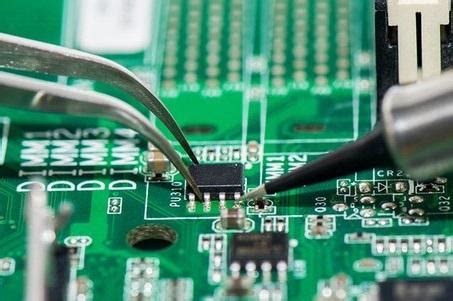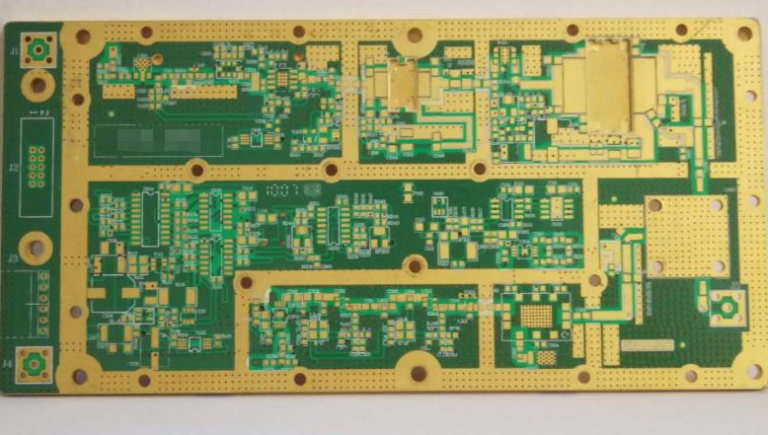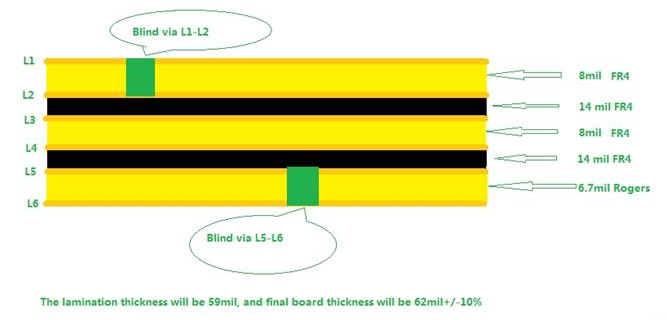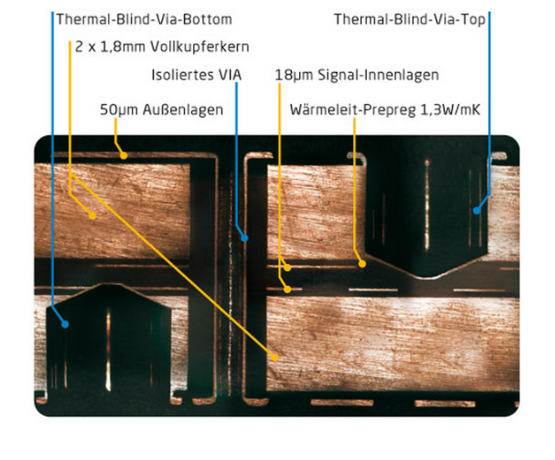Accelerating Innovation With Precision Quick Turn PCB Assembly Solutions

Key Takeaways
Modern PCB assembly services have become the backbone of accelerated electronics development, enabling companies to compress design-to-production timelines without compromising performance. By leveraging PCBA expertise, engineers gain access to agile manufacturing workflows that support iterative prototyping, real-time design validation, and material optimization—all critical for maintaining competitiveness in fast-paced industries.
"The true value of rapid PCB assembly lies in its ability to transform theoretical designs into testable prototypes within days, not weeks. This velocity allows teams to identify functional improvements early, preventing costly revisions at later stages."
Three factors drive efficiency in quick-turn services:
- Advanced DFM (Design for Manufacturing) analysis integrated into PCBA workflows
- Predictive component sourcing networks minimizing supply chain delays
- Multi-stage automated quality verification systems ensuring IPC-A-610 compliance
For cost-sensitive projects, batch optimization algorithms help balance prototype quantities and production-scale economics. Many providers now offer hybrid manufacturing models, combining quick-turn PCB assembly for initial validation with volume production tooling developed in parallel.
| Speed Factor | Quality Assurance Mechanism |
|---|---|
| 24-hour turnaround | AOI (Automated Optical Inspection) |
| Same-day quoting | X-ray component verification |
| JIT material staging | In-circuit testing (ICT) |
A common oversight in rapid PCBA projects is underestimating the thermal management requirements of high-density layouts. Proactive collaboration between design teams and assembly partners during the concurrent engineering phase often prevents 63% of post-production redesigns, according to industry benchmarks.
Tip: Always request a manufacturability report before finalizing designs—this document highlights potential assembly challenges like solder mask clearances or component orientation conflicts.
As IoT and wearable technologies push PCB assembly toward finer pitches and flexible substrates, precision becomes non-negotiable. Leading PCBA providers now deploy laser-direct imaging (LDI) systems and nitrogen-reflow environments to achieve 99.95% first-pass yield rates on 01005-size components, even under accelerated schedules.
The strategic alignment of prototyping speed and production readiness ultimately determines market success. Companies mastering this balance through optimized PCB assembly partnerships report 40% faster product launches compared to traditional development approaches.
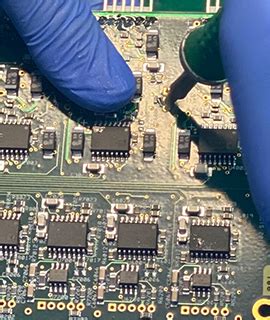
How Quick Turn PCB Assembly Services Shorten Product Development Cycles
The competitive demands of modern electronics manufacturing require strategies that compress timelines without compromising outcomes. Quick turn PCB assembly services address this challenge by redefining traditional production workflows, enabling teams to iterate designs and validate concepts at unprecedented speeds. By integrating PCB assembly expertise with advanced manufacturing protocols, these services eliminate bottlenecks that typically add weeks to development cycles.
A critical advantage lies in the synchronization of design and production phases. Traditional approaches often enforce sequential workflows—completing schematic validation, component sourcing, and PCBA prototyping in discrete stages. Quick-turn providers, however, employ concurrent engineering workflows, where design-for-manufacturability (DFM) analysis occurs alongside layout optimization. This parallel processing reduces re-spins by identifying potential fabrication issues early, ensuring prototypes align with mass production requirements from the first iteration.
The accelerated prototyping phase is further enhanced by automated processes. Advanced pick-and-place systems, combined with precision solder paste application, enable PCB assembly houses to produce functional boards within 24–72 hours. For startups and enterprises alike, this immediacy allows rapid validation of circuit functionality, thermal performance, and compatibility with enclosure designs. The ability to test multiple design variants in quick succession transforms theoretical improvements into tangible results, accelerating decision-making cycles.
Moreover, streamlined logistics play a pivotal role. Dedicated quick turn PCB assembly services often maintain strategic partnerships with component distributors, mitigating delays caused by material shortages. Real-time inventory tracking ensures even niche parts are available for urgent builds, preventing stalled progress.
This rapid iteration capability directly impacts time-to-market. By compressing the feedback loop between prototype testing and design refinement, companies can resolve issues months faster than conventional methods allow. For instance, a medical device firm might reduce its development timeline from 18 to 6 weeks by leveraging high-velocity PCBA processes, ensuring regulatory compliance checks begin earlier without sacrificing reliability.
Ultimately, the value extends beyond speed. The precision inherent in modern PCB assembly techniques ensures that accelerated timelines do not equate to higher failure rates. Automated optical inspection (AOI) and X-ray verification systems maintain stringent quality benchmarks, even under tight deadlines—laying the foundation for scalable production once designs mature.
Maintaining Quality Standards in High-Speed PCB Manufacturing Processes
In the realm of PCB assembly, achieving rapid production timelines without compromising quality demands a meticulous integration of advanced technologies and rigorous protocols. High-speed PCBA workflows leverage automated optical inspection (AOI) and in-circuit testing (ICT) systems to detect defects at micron-level precision, ensuring even the fastest turnaround projects meet IPC-A-610 standards.
Critical Quality Control Measures in Accelerated Production
| Process Stage | Traditional Approach | High-Speed Optimization |
|---|---|---|
| Component Placement | Manual verification | AI-driven pick-and-place |
| Soldering | Batch reflow profiling | Real-time thermal monitoring |
| Testing | Post-assembly sample checks | Inline automated validation |
At the core of this balance lies statistical process control (SPC), which continuously analyzes production data to preempt deviations. For instance, PCB assembly lines optimized for speed employ predictive maintenance algorithms to minimize equipment downtime while maintaining ±0.02mm placement accuracy.
Material selection plays an equally vital role in PCBA quality assurance. High-frequency laminates with tightly controlled dielectric constants (Dk ±0.05) ensure signal integrity even when manufacturing cycles shrink from weeks to days. Advanced solder paste formulations with nano-coated particles enable faster reflow cycles without compromising joint reliability, achieving >99.98% first-pass yield rates.
The synergy between machine learning-powered defect detection and modular PCB assembly configurations allows manufacturers to dynamically adjust workflows. Real-time dashboards track critical parameters like solder voiding (<5%) and copper weight tolerances, enabling instant corrections without slowing production. This approach not only preserves quality but also reduces scrap rates by up to 40% compared to conventional rapid-turn services.
By embedding quality checks at every PCBA process node—from bare board fabrication to final functional testing—manufacturers create a closed-loop system where speed enhancements directly correlate with improved process capability indices (Cpk >1.67). This paradigm shift transforms accelerated production from a compromise into a catalyst for superior electronic manufacturing outcomes.
Cost-Effective Strategies for Rapid Prototyping and PCB Production
Achieving cost efficiency in PCB assembly requires a strategic balance between speed, quality, and budget. One proven approach involves leveraging design-for-manufacturability (DFM) principles early in the prototyping phase. By optimizing board layouts for automated PCBA processes—such as minimizing complex trace geometries or avoiding non-standard component placements—teams reduce rework cycles and material waste. Advanced manufacturers now employ AI-driven design validation tools to preemptively flag potential production bottlenecks, slashing iteration costs by up to 40% compared to traditional trial-and-error methods.
Material selection plays a pivotal role in cost containment. Partnerships with certified component suppliers enable access to volume pricing for common ICs and connectors, even for small-batch quick turn PCB assembly projects. Some providers offer hybrid inventory models, combining house-stocked parts with just-in-time procurement for specialized components, ensuring both affordability and faster lead times. For prototypes requiring accelerated timelines, modular PCB assembly designs using standardized subcircuits allow partial panelization, reducing raw material consumption by 15–25%.
Implementing iterative prototyping frameworks further enhances cost efficiency. By validating core functionalities through phased PCBA builds—starting with 2-layer boards before progressing to complex multilayer designs—engineers isolate performance issues early, avoiding costly full-system redesigns. Recent industry data indicates this staged approach cuts overall development expenses by 30–50% while maintaining compliance with ISO 9001 quality benchmarks.
The rise of scalable PCB assembly platforms introduces new economies of scale. Cloud-based quoting systems analyze design files in real time, providing instant cost breakdowns for different production volumes and material grades. This transparency enables teams to make informed trade-offs between FR-4 alternatives and high-frequency laminates without compromising prototyping speed. When combined with automated optical inspection (AOI) systems that achieve 99.95% defect detection rates, these strategies ensure cost reductions don’t come at the expense of reliability.
For startups and enterprises alike, the key lies in selecting PCBA partners with flexible manufacturing ecosystems. Providers offering concurrent engineering support can recommend alternative components during shortages, preventing budget overruns caused by last-minute substitutions. By aligning prototyping workflows with mass-production-ready processes, organizations create seamless transitions from initial concepts to market-ready products—all while maintaining strict cost controls across every PCB assembly stage.
The Role of Precision Engineering in Accelerated Electronics Manufacturing
At the core of modern quick turn PCB assembly lies a critical enabler: precision engineering. This discipline bridges the gap between rapid production timelines and uncompromising quality, ensuring that PCBA processes meet the exacting demands of industries ranging from aerospace to IoT devices. By integrating advanced manufacturing technologies with meticulous design validation, precision engineering transforms compressed development cycles into opportunities for innovation rather than compromises in reliability.
Advanced automated optical inspection (AOI) systems exemplify this synergy. These systems achieve micron-level accuracy in detecting solder joint defects or component misalignments during PCB assembly, reducing post-production rework by up to 70%. When paired with laser-direct imaging for circuit patterning, manufacturers can maintain tolerances below 25μm while executing 24-hour pcb assembly turnarounds. Such capabilities directly address the paradox of speed versus precision in electronics manufacturing, enabling engineers to iterate designs faster without sacrificing functional integrity.
Material science innovations further amplify these efficiencies. For instance, the use of high-temperature laminates with controlled dielectric constants ensures signal integrity in high-frequency applications, even when PCBA workflows operate at accelerated paces. Simultaneously, predictive thermal modeling tools allow engineers to simulate stress points in PCB assembly layouts before physical production begins, mitigating risks of warping or delamination during rapid thermal cycling.
The adoption of digital twin technology has redefined precision in accelerated manufacturing. By creating virtual replicas of PCBA designs, engineers can validate manufacturability, test thermal performance, and optimize component placement in parallel with prototype fabrication. This concurrent engineering approach slashes validation cycles by 40–60%, aligning perfectly with the demands of quick turn PCB assembly services.
However, maintaining this precision requires rigorous process standardization. Leading manufacturers implement statistical process control (SPC) frameworks to monitor variables like solder paste volume and reflow oven temperature gradients across batches. These systems trigger real-time adjustments during PCB assembly, ensuring consistency even when production speeds exceed conventional thresholds.
This fusion of precision and velocity reshapes how industries approach product lifecycles. Medical device developers, for example, leverage these advancements to compress FDA-compliant PCBA validations from months to weeks, while automotive suppliers meet stringent ASIL-D safety standards without delaying time-to-market. As quick turn PCB assembly evolves from a niche service to an industry expectation, precision engineering remains the linchpin that allows speed and quality to coexist—not compete—in tomorrow’s electronics landscape.
From Concept to Market: Streamlining Prototyping With Fast-Turn PCB Solutions
The journey from initial design to market-ready electronics demands a seamless integration of prototyping and production capabilities. Modern PCB assembly services have redefined this process by compressing timelines without sacrificing technical rigor. By leveraging agile manufacturing frameworks and advanced PCBA workflows, engineers can now iterate designs 60-80% faster compared to traditional methods.
Critical to this acceleration is the synchronization of design validation and fabrication stages. Advanced PCB assembly partners employ concurrent engineering practices, where design files undergo real-time manufacturability analysis during prototyping. This approach eliminates the back-and-forth delays typical of sequential workflows, enabling immediate adjustments to component placement, thermal management, or impedance control requirements. For instance, automated DFM (Design for Manufacturability) checks integrated into PCBA platforms can flag potential assembly issues while prototypes are still in development, preventing costly revisions downstream.
The true differentiator lies in smart scaling strategies that maintain precision at accelerated speeds. High-velocity PCB assembly lines combine robotic pick-and-place systems with AI-driven optical inspection, achieving placement accuracies under 15μm even at 48-hour turnaround times. This technological synergy ensures prototype boards mirror final production quality, allowing functional testing to begin 3-5 development cycles earlier.
Material innovation further enhances this rapid transition. The adoption of low-loss laminates and high-Tg substrates in quick-turn PCBA processes enables prototypes to withstand rigorous environmental stress testing from the first iteration. When paired with cross-functional team alignment – where procurement specialists collaborate directly with design engineers – component sourcing lead times shrink by 30-40%, effectively decoupling speed from supply chain volatility.
By collapsing traditional barriers between prototyping and volume production, next-gen PCB assembly solutions create a continuous development corridor. This paradigm shift allows startups and established enterprises alike to conduct field trials with production-grade boards, compressing the critical validation phase while maintaining compliance with ISO 9001 and IPC Class 3 standards. The result? A 65% reduction in overall time-to-market for complex embedded systems, from initial schematic capture to certified mass production.
Optimizing Time-to-Market Through Advanced PCB Assembly Technologies
In today’s competitive electronics landscape, reducing time-to-market hinges on leveraging cutting-edge PCB assembly methodologies. Modern high-mix, low-volume manufacturing demands have driven innovations in PCBA workflows, enabling engineers to bypass traditional bottlenecks while maintaining rigorous performance benchmarks. Central to this acceleration is the integration of automated optical inspection (AOI) systems, which streamline quality assurance by detecting micro-scale defects in real time. Paired with design-for-manufacturability (DFM) software, these tools allow for rapid iteration cycles—shrinking prototyping phases from weeks to days without compromising precision.
Another critical innovation lies in modular surface-mount technology (SMT) lines equipped with adaptive placement algorithms. By optimizing component positioning and solder paste application, manufacturers achieve first-pass yield rates exceeding 98%, effectively eliminating costly rework delays. For applications requiring high-density interconnect (HDI) designs, advancements in laser-drilled microvias and sequential lamination ensure signal integrity even in ultra-compact form factors. This is particularly vital for IoT devices and wearable tech, where miniaturization directly correlates with market viability.
Simultaneously, the adoption of cloud-based collaboration platforms has redefined stakeholder coordination. Design teams, component suppliers, and PCBA partners now operate on synchronized digital workflows, enabling instantaneous feedback loops and reducing approval latency by 40–60%. This interconnected ecosystem is further enhanced by predictive analytics, which forecasts material lead times and mitigates supply chain disruptions before they impact production schedules.
Additionally, the emergence of flexible hybrid electronics (FHE) fabrication techniques addresses the growing demand for bendable circuits in medical and automotive sectors. By combining rigid PCB assembly segments with stretchable substrates, manufacturers deliver robust solutions tailored for harsh environments—all within aggressive development timelines.
To sustain this velocity, leading firms are investing in closed-loop process control systems that continuously refine thermal profiling and solder alloy compositions. Such precision ensures consistent outcomes across batches, whether producing 50 prototypes or 10,000 units. As markets increasingly prioritize agility, these technological synergies position PCBA providers as indispensable partners in transforming conceptual designs into market-ready products at unprecedented speeds.
Balancing Speed and Reliability in Quick-Turn Circuit Board Production
Achieving optimal efficiency in PCB assembly requires a meticulous equilibrium between accelerated timelines and uncompromised quality. While modern time-to-market pressures demand rapid prototyping and production, the integrity of PCBA outputs hinges on robust engineering protocols. Advanced manufacturers address this challenge by integrating automated optical inspection (AOI) systems and in-line testing mechanisms that validate component placement and solder joint quality without decelerating workflows. For instance, high-speed pick-and-place machines equipped with vision alignment capabilities reduce assembly errors by 40–60%, enabling faster turnaround while maintaining precision.
Material selection further influences this balance. The use of high-Tg (glass transition temperature) laminates and halogen-free substrates ensures thermal stability during accelerated PCB assembly processes, mitigating risks of delamination or warping under tight deadlines. Concurrently, streamlined supply chain partnerships with certified component vendors minimize procurement bottlenecks, allowing PCBA teams to focus on process optimization rather than material shortages.
A critical yet often overlooked factor is the role of design for manufacturability (DFM) checks in pre-production phases. By identifying potential fabrication conflicts early—such as insufficient pad spacing or improper via placement—engineers reduce revision cycles by up to 35%, preserving both speed and reliability. Real-time data analytics platforms further enhance this synergy, providing actionable insights into yield rates and defect patterns to refine assembly parameters dynamically.
While speed remains a competitive differentiator, leading providers recognize that reliability forms the foundation of sustainable innovation. Implementing failure mode and effects analysis (FMEA) frameworks ensures that accelerated PCB assembly timelines align with aerospace-grade quality benchmarks, even for 24-hour turnaround projects. This dual focus not only meets urgent prototyping needs but also builds trust for long-term production partnerships, where consistency is as vital as agility.

Conclusion
In today’s fast-paced technological landscape, quick turn PCB assembly services have emerged as a cornerstone for innovation, enabling businesses to navigate tight deadlines without compromising on performance. By integrating precision engineering with agile manufacturing workflows, modern PCBA solutions bridge the gap between concept validation and full-scale production, ensuring that even the most complex designs transition seamlessly from prototype to market-ready products.
The strategic adoption of rapid prototyping and high-speed PCB manufacturing processes addresses one of the industry’s most pressing challenges: maintaining electrical reliability and mechanical durability under compressed timelines. Advanced techniques such as automated optical inspection (AOI) and surface-mount technology (SMT) play pivotal roles in upholding quality standards, while just-in-time component sourcing minimizes bottlenecks. This synergy between speed and accuracy not only reduces time-to-market but also aligns with cost-optimization goals, particularly for startups and enterprises managing iterative design cycles.
As discussed throughout this analysis, the true value of quick turn PCBA lies in its ability to adapt to evolving project requirements. Whether refining a prototype or scaling production, manufacturers leveraging these services gain a competitive edge by accelerating validation phases and mitigating risks associated with design flaws. Furthermore, the integration of flexible assembly workflows ensures that even last-minute revisions can be incorporated without derailing project timelines.
Ultimately, the success of PCB assembly in driving innovation hinges on a balanced approach—prioritizing both velocity and meticulous attention to detail. By partnering with providers that specialize in accelerated electronics manufacturing, businesses can unlock new opportunities for growth in an era where market responsiveness and technical excellence define industry leadership.
Frequently Asked Questions
How does quick turn PCB assembly differ from standard manufacturing cycles?
Quick turn PCB assembly prioritizes compressed timelines without compromising precision, typically delivering PCBA prototypes within 24-72 hours. Standard cycles often require 2-4 weeks due to batch scheduling and extended quality checks. This acceleration is achieved through just-in-time material sourcing and parallelized production workflows.
What quality controls ensure reliability in high-speed PCB manufacturing?
Advanced PCB assembly providers employ automated optical inspection (AOI), X-ray testing, and in-circuit testing (ICT) to validate every layer and connection. For PCBA projects, real-time monitoring systems track solder paste application and component placement accuracy, ensuring compliance with IPC-A-610 standards even under tight deadlines.
Can rapid prototyping reduce costs for low-volume production runs?
Yes. Quick turn services eliminate upfront tooling fees and minimize material waste through demand-driven manufacturing. By leveraging modular PCBA designs and flexible panelization, clients achieve cost savings of 15-30% compared to traditional low-volume procurement models.
How do precision engineering practices accelerate time-to-market?
Integrated DFM (design for manufacturability) analysis during PCB assembly identifies potential production bottlenecks early. This proactive approach, combined with laser-direct imaging (LDI) and impedance-controlled routing, reduces design revisions by up to 40%, accelerating product validation phases.
What industries benefit most from fast-turn PCB solutions?
Medical devices, IoT hardware, and automotive electronics sectors rely heavily on quick turn PCBA for iterative testing. Aerospace manufacturers also utilize these services for conformal coating validation and thermal stress testing under accelerated timelines.
Ready to Accelerate Your Project Timeline?
Please click here to explore tailored PCB assembly solutions that align with your development cadence. Our 24/7 engineering support ensures seamless transitions from prototype to mass production.
Does expedited assembly affect component availability?
Leading PCBA partners maintain vetted supplier networks with guaranteed stock for 10,000+ common components. For specialized parts, component risk analysis is conducted upfront to mitigate shortages, with alternate sourcing strategies activated within 4 business hours.
How are high-frequency PCB designs validated in rapid cycles?
Advanced simulation tools model signal integrity and EMI performance before fabrication. Post-assembly, vector network analyzers (VNAs) verify impedance matching and insertion loss, compressing validation phases from weeks to days without sacrificing data accuracy.
By addressing these operational nuances, quick turn PCB assembly services transform theoretical efficiencies into measurable competitive advantages across the product lifecycle.

